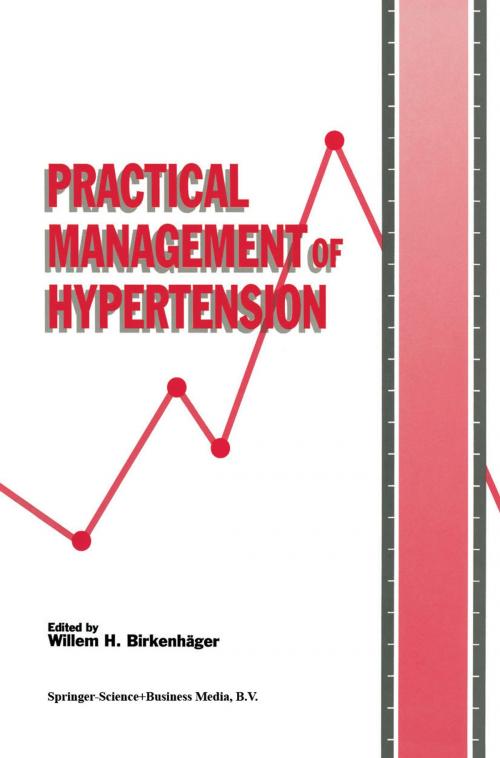Practical Management of Hypertension
Nonfiction, Health & Well Being, Medical, Specialties, Internal Medicine, Cardiology| Author: | ISBN: | 9789401137249 | |
| Publisher: | Springer Netherlands | Publication: | December 6, 2012 |
| Imprint: | Springer | Language: | English |
| Author: | |
| ISBN: | 9789401137249 |
| Publisher: | Springer Netherlands |
| Publication: | December 6, 2012 |
| Imprint: | Springer |
| Language: | English |
WILLEM H. BIRKENHA. GER This compact guide aims to define the current approach to hypertension in practice, with the focus on the individual whom the physician faces across his desk. In the population, blood pressures are distributed along a Gaussian type of curve, but with some tailing towards the upper range. A systolic blood pressure of 160 mmHg is commonly accepted as the upper limit of the normal range. For diastolic pressure, the gradings are much more detailed: borderline hypertension (90-94 mmHg, mild hypertension (95-104 mmHg), moderate hypertension (105-114 mmHg), and severe hypertension (115 mmHg and over). Despite its skewing to the right, the bell shape of the distribution curve of blood pressures implies that the milder elevations of blood pressure are the most common. Such pressures are observed in 15-20% of the population upon casual measurement. After rechecking - which is mandator- the prevalence of hypertension drops to some 5%, due to psychological and statistical factors. Even this modest segment of the population represents an important proportion in terms of future cardiovascular risk. It is an essential part of preventive and curative health care to identify these people; the more so, because some 40% of the excess risk has already been proven to be reversible by conventional antihypertensive treatment.
WILLEM H. BIRKENHA. GER This compact guide aims to define the current approach to hypertension in practice, with the focus on the individual whom the physician faces across his desk. In the population, blood pressures are distributed along a Gaussian type of curve, but with some tailing towards the upper range. A systolic blood pressure of 160 mmHg is commonly accepted as the upper limit of the normal range. For diastolic pressure, the gradings are much more detailed: borderline hypertension (90-94 mmHg, mild hypertension (95-104 mmHg), moderate hypertension (105-114 mmHg), and severe hypertension (115 mmHg and over). Despite its skewing to the right, the bell shape of the distribution curve of blood pressures implies that the milder elevations of blood pressure are the most common. Such pressures are observed in 15-20% of the population upon casual measurement. After rechecking - which is mandator- the prevalence of hypertension drops to some 5%, due to psychological and statistical factors. Even this modest segment of the population represents an important proportion in terms of future cardiovascular risk. It is an essential part of preventive and curative health care to identify these people; the more so, because some 40% of the excess risk has already been proven to be reversible by conventional antihypertensive treatment.















